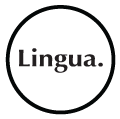Global Branding – Taking Your Brand Globally
Is your company or organization about to take the next step and leap into the global market? Do you already have existing outlets in other countries but lack a cohesive multi-lingual branding strategy?
Now is the time to get your company heads together and map out the most effective ways to maintain your brand image across multiple countries and cultures. How successful you are will be largely determined by how thoroughly you research and develop your branding and communication strategies.
What do you want to convey? What’s important?
Before you venture into the global market it is important to take stock of what makes your brand stand out. Is it the products themselves? The ethics and values of the company? The unique designs? The use of cutting edge technology or innovative approaches?
Once you have determined these factors, consider how they are portrayed to your customers. There are often many ways to convey these concepts with branding including the use of color and mood. For example a company selling organic or hand-made goods might use earthy colors in its literature and country scenes in its advertising.
When promoting your brand internationally, it is not necessary to reproduce every detail like a carbon copy. Sometimes it is better to make some adjustments that suit the local culture better and translate more smoothly. Be aware of the potential for insult or error with literal translations or the use of colors or symbols. Keep the essence of the brand but adapt it to each local environment. To keep everything looking like a recognizable brand, maintain consistency in design elements such as fonts, templates and formatting.
Who should be involved in branding decisions?
These are not matters to be decided on in a day. To globalize your brand you need the input of a number of internal and external parties. For example:
- Corporate heads in each country
- The design team
- The marketing team
- Production and distribution managers
- IT and software developers
- Other department heads to give different perspectives
- Professional translation and globalization consultants
By getting parties like these involved in the global branding process from the start your company will stand a much better chance of achieving a smooth implementation in your desired timeframe. Each party will know what their individual needs are and these can be analysed and incorporated as much as possible into the overall plan. For example, the design team would need to consider how the fonts used in different languages will affect the look of various documents and website pages. Logos that include text may look aesthetically appealing in English but not in German so they would need to decide whether to maintain the English version or create a new logo that is universally appealing.
Which factors and resources need to be reviewed for translation?
Every area of communication across the entire company will need to be reviewed to decide if translation is required.
All printed literature used for marketing, distribution, internal procedures and resources may have to be transcribed into several languages so that every customer and employee receives the same information. This also applies to all online text used in email templates, public and internal websites and social media posts.
Internal shared applications such as accounting systems, customer and other databases and production tracking systems will all need thorough analysis to ensure that local currencies, taxes, terminology and regional nuances are all taken into account and fully tested.
Multimedia resources and marketing campaigns are another area where careful translation is vital. TV advertisements that are funny in some countries could be quite offensive in others. Training videos that have incorrect subtitles or voice-overs could result in mistakes being made. These could potentially affect productivity, profits or even safety.
Once the areas to be translated have been chosen, organizations then need to decide how many languages to include and which ones to use. This would be determined by the regions they are targeting and the available budget and resources.
Who can do this?
Hiring local, crowdsourced translators and other skilled professionals managed by a specialized translation and branding management company often achieves the best results. The crowdsourcing concept involves outsourcing work to the global workforce ‘crowd’. Crowd members are generally freelancers who offer their services in their preferred areas. They post their profiles on websites that are similar to community notice boards but just in a virtual environment. Companies or individuals post their projects on these sites and the freelancers compete against each other and bid for the work.
Using freelancers saves time and money and allows existing employees to do their job without placing further stress on them. The freelancers are highly skilled and committed to top quality service and fast turn-around times. They also contribute fresh ideas and solutions. Many companies are increasingly finding that using a mix of crowdsourced and permanent employees to implement their global branding strategies gives the best overall results.
As only 20% of all internet users have English as their first language, organizations that have the most successful global expansion programs are the ones that have considered all potential users and developed strategies to communicate with them in their own language and cultural terms.
Contact us here at Lingua for your global Branding services.

